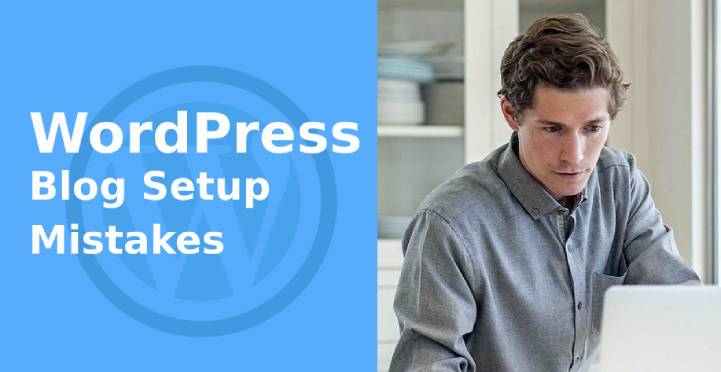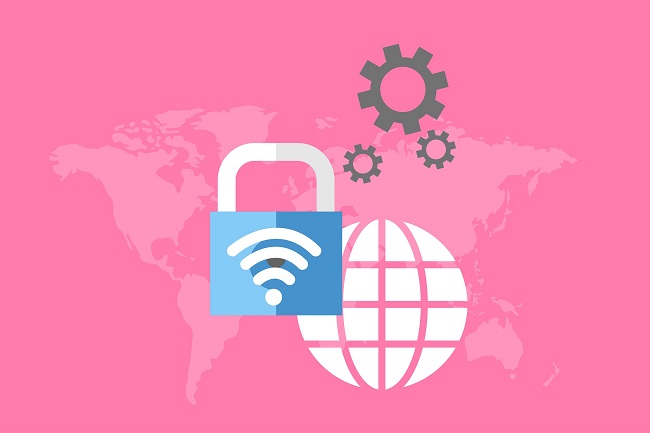It’s quite easy to get your WordPress website up and running. Most web hosting companies provide a one-click WordPress installation procedure, which is very convenient.
Table of Contents
This makes designing a decent website possible, even to people who don’t know any coding language.
Though the installation process is easy, a lot needs to be done after the installation to ensure you get an attractive and high-quality website.

When you don’t setup your WordPress blog well, you’ll miss out on the several advantages offered by this content management system and might even put your website at risk. Let’s see what mistakes you should know about and avoid.

Image source: https://unsplash.com
Consider the Web Hosting Platform
Before you even reach the setup a blog stage, you need to decide on the best web host for your site. While it may tempt you to choose the cheapest option, you’ll be missing out on the features and support offered by paid-up hosts.
Not all web hosts are the same. Do some research to find out the best before signing up. Here are some factors you need to find out about before signing up.
- How knowledgeable and responsive customer support is
- Is the web hosting provider fast
- What security features will you need and if they provide them
- Does the web host promise and hold up uptime that is no less than 99%
The bottom line is to choose the most reliable hosting for WordPress. You need a host that offers the best services and has 24/7 support just in case you may have some issues.
Once you get a good host, the setup process begins. Here are some mistakes you need to avoid while setup your WordPress blog.
1. Failing to Change the Default WordPress Username
When you install WordPress, it will come with a default admin username for the administrator’s account. If you don’t change this name, hackers may find it easy to get access to your dashboard and interfere with your website.
Hackers usually try the “admin” username on newly built websites, so immediately after you install WordPress, change the admin username to something difficult to guess, or not very obvious.

Image source: https://pixabay.com/
2. Using a Weak Password
Just like with changing the admin username, hackers usually try several passwords on websites, and they may succeed on your website if you use a weak password.
I would advise that you choose a strong password, comprising both upper and lower case letters, plus other characters.
Ideally, use a password manager app like 1password to have a password that is virtually unbreakable by brute force attacks.
3. Using Unsightly Permalinks
The URLs to your website’s pages (permalinks) need to be simple. By default, WordPress will give long permalinks to your web pages.
For example, you may find a permalink that looks like this yourwebsite.com/?p=123. This URL is not only ugly, but it also doesn’t give the reader any information connected to the URL.
A URL to an article should, at least, have some information on what the article is about – the topic. The words in the URL guide both the readers and the search engines.
So, you need to change your permalinks to make them more friendly. Something like https://www.sktthemes.org/wordpress-plugins/best-wordpress-plugins-and-tools-for-business-websites/ looks much better. This URL tells the reader it leads to an article dealing with – best WordPress plugins.
To change the permalink, log into your WordPress website, then click Settings. Go to Permalinks then click “Post Name.” Finally, save the changes. Once you do that, any article you post will pick a URL that has words from the title of the article.
4. Using The Wrong WordPress Theme
WordPress has many themes that you can choose from. But what makes some of these themes bad for your website? I can not list all the qualities of bad themes, but I will mention a few things you should be wary about. A bad theme:
- Is not responsive – it doesn’t fit well on some devices like phones or tablets
- Doesn’t have all the features necessary for your business
- Doesn’t have any support
- Is no longer updated to fix bugs and accommodate new versions of WordPress
- Doesn’t allow you to change the layout or colors
- Doesn’t match with the services or product you are offering
In case you’ve installed a wrong theme, you can contact a web developer or designer to tweak it, or you can remove it and install a new theme. Follow the link while Choosing a Website Theme.
5. Choosing The Wrong Subfolder
URLs should be as simple as possible to make it easy for visitors to remember. Even though long URLs are acceptable and will just work fine, some words may be unnecessary and redundant.
For example, there’s a difference between a URL like yoursitename.com/blog/ and yoursitename.com/blog/wordpress/. The former looks simple and straightforward, but the latter is complex and looks quite unprofessional.
When you get such a URL, it means the webmaster never removed the contents found in the installation folder of WordPress. The content of the installation folder needs to be removed and placed in another folder pre-named “blog”.
Another method is to upload the WordPress folder, then rename it accordingly. If you want to have a simple URL, don’t forget this step. Ideally, if you’re using an auto-installer, it’ll make sure you don’t run into this issue.
6. Not Having An Effective Backup Plan
A good WordPress website needs a backup plan. This will ensure you don’t lose any data should the website crash. Crashing happens from the host’s end, or if you make the wrong tweaks to your website.
In case of such an unfortunate event, you may lose your tags, categories, posts, images, .htaccess file, robots.txt file, and the entire database.
That’s why you need a backup plan that can help in restoring your website after a crash. You can either use your hosting provider’s backup solution or get a plugin like Updraft to take care of the backups.
There’s so much more we could cover, but we’d need a book’s length of an article, so here are some other little things that are often overlooked:
- Failing to create your favicon
- Leaving in the sample content
- Using the “Uncategorized” option while posting content
- Editing theme’s files without creating a child theme
- Disregarding SEO
- Not having security measures in place
Final Words
As you have seen, it’s quite easy to install WordPress, but the real work begins after the installation. Setup a WordPress blog needs patience and keenness. This is because whatever the component you leave unattended to might cost you.
If possible, you can hire an expert to carry out the installation and setup a blog for you. Above all, ensure you get a supportive hosting platform.
